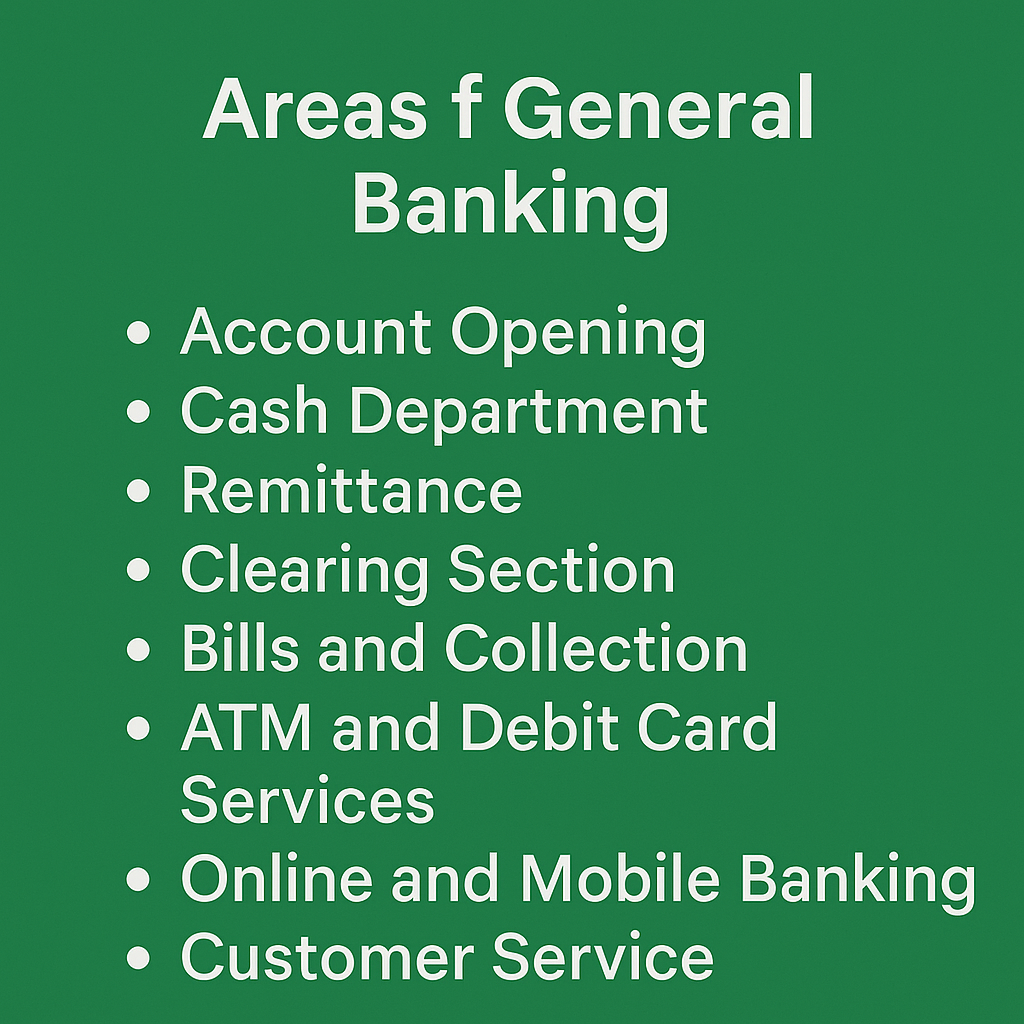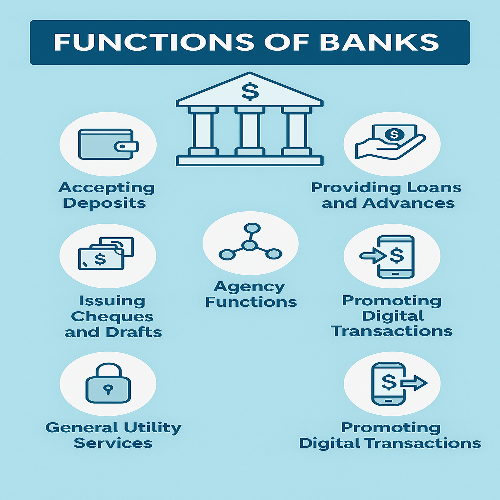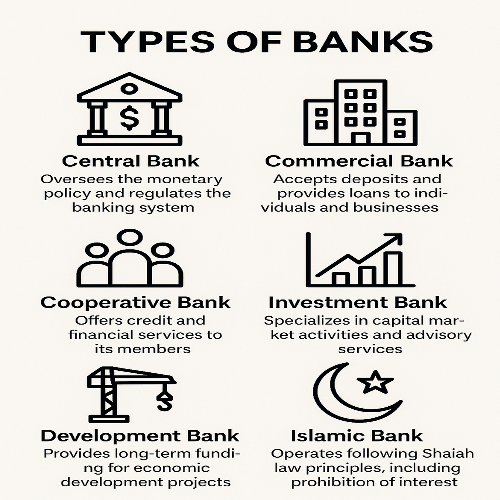Explore the key areas of general banking, including account opening, remittance, clearing, and digital banking services, essential for everyday customer and bank operations.
Author: Md.Sohel Rana
Functions of Banks
Understand the key functions of banks including deposit collection, loan disbursement, credit creation, and more that contribute to economic development.
Types of Banks
An informative guide on different types of banks including central, commercial, cooperative, and development banks, tailored for banking professionals and students.
Understanding the Basics of Banking
Learn the basics of banking, types of bank accounts, and how banks impact the economy. A guide for individuals looking to understand financial institutions and service
Bank Deposit Insurance Act, 2000
Learn about the Bank Deposit Insurance Act, 2000 of Bangladesh, its key provisions, benefits for depositors, and how it ensures financial security in the banking sector.





